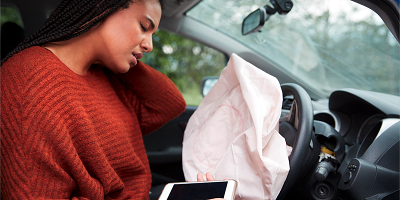The introduction of a car crash detection feature into smartphones has recently sparked enthusiasm in the tech community. Either based on a low-g or high-g accelerometer, this feature can initiate an emergency call in case of a severe car crash accident. All smartphones across the globe already include at least one low-g accelerometer. Let’s discover why upgrading to high-g is key to ensure reliability, and most importantly, safety.
High-g Accelerometers: What it is and Why it Matters
If you are watching videos on your smartphone, you may be changing your screen orientation from portrait to landscape mode. All this, thanks to a low-g accelerometer that senses normal earth gravity-level accelerations. Low-g accelerometers excel at sensing fine motion but offer limited performance when it comes to car crash detection. With a sensitivity cap of up to 8g-force accelerations—eight time the conventional value of gravitational acceleration on Earth—low-g accelerometers may sense a car accident, but might also initiate false SOS emergency calls every time you drive too fast over a pothole.
Any reliable car crash detection system requires an accelerometer that can measure up to several hundreds of g-force accelerations. And that’s where high-g accelerometers come into play, supporting up to ±400g-force accelerations and providing valuable information on the exact nature of the impact. In fact, a myriad of incoming data collected from the sensor—waveforms and vibration shapes—is processed and then translated into clear information. This information helps identify whether you are hitting a simple pothole or are having a serious car accident.
Initially developed to accurately detect potential concussions in high-impact sports, ST’s H3LIS331DL high-g accelerometer has been designed to fit into kids’ helmets. With a 3x3x1mm footprint, this tiny and low-power sensor has, since then, found its way into a wide range of power-constrained applications, including luxury asset tracking solutions and F1 driver earplugs. Based on ST’s extensive expertise in automotive products, our H3LIS331DL high-g accelerometer also enables highly reliable head-on, rear-end, side-impact as well as rollover crash detection.
Easily Add a Crash Detection Feature to Your Development
ST is committed to helping developers make more accurate and affordable car crash detection systems across all personal electronics market segments—not just in the premium models of today. And, above all, we are committed to making developers’ life easier with faster development times.
ST’s H3LIS331DL offers a wide signal bandwidth and is capable of measuring accelerations with output data rates from 0.5 Hz to 1 kHz, which helps provide additional information on the magnitude of the impact and minimize false-positive emergency calls. Additionally, depending on the detection algorithm in use, ST’s sensor covers ±100 g, ±200 g and up to ±400 g-force accelerations and operates over an extended temperature range from -40 °C to +85 °C, making the overall car crash detection system more secure, even under extreme conditions.
While existing high-g shock-detection solutions are mostly based on single or dual-axis power-hungry motion sensors—such as automotive airbag sensors—ST’s state-of-the-art 3-axis MEMS accelerometers only consume about 20 microwatts. In a further effort to conserve personal electronics batteries and reduce overheating, the sensor also comes with ultra-low-power wake-up modes, including an advanced power-saving feature.
To fast-track your H3LIS331DL-based developments, ST provides a full ecosystem with Android-enabled software drivers and evaluation kits. On top of that, Android designers can quickly create car crash detection system prototypes with our cost-effective STM32 Nucleo development kits. Naturally, developers that are already using ST’s low-g accelerometer will have no difficulty in upgrading. Finally, anyone developing a car crash detection system should consider adding a neural network as a piece of software inside the microprocessor to analyze all kinds of situations, including situations that some current phones on the market do not consider—roller coasters at amusement parks.








